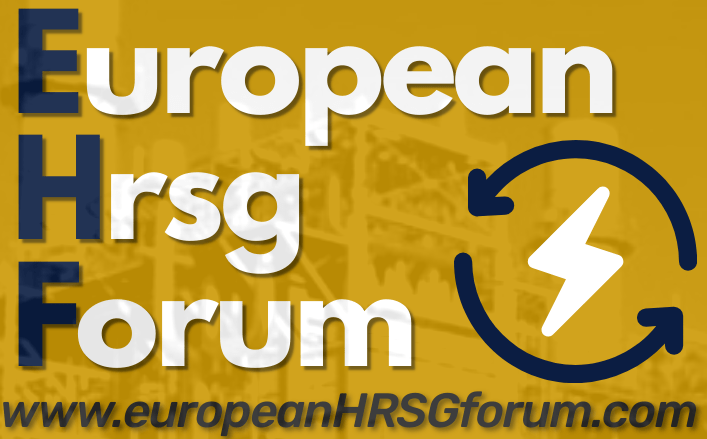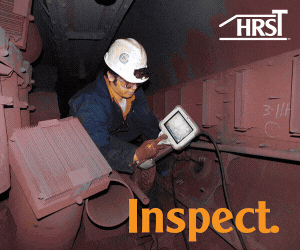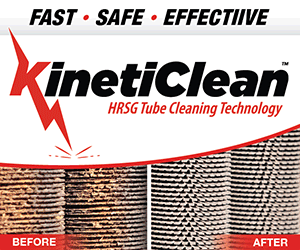The 10th annual IAPWS European HRSG Forum (EHF), held May 13-15, 2024 in Prado, Italy, and chaired by Barry Dooley of Structural Integrity and Bob Anderson of Competitive Power Resources, attracted 90 participants from 18 countries—including 40 users. EHF, developed and supported by the International Association for the Properties of Water and Steam (IAPWS), is held in association with the Australasian Boiler and HRSG Users Group (ABHUG) and the US HRSG Forum (HF).
EHF2024 featured 24 presentations, a forum for the release of new information and technology related to HRSGs, case studies of plant experiences and solutions, and open discussions among the plant users, equipment suppliers, and industry consultants. The mix of topics (materials, cycle chemistry, operation, valves, tube failures and assessment techniques, inspection and remaining life aspects, and HRSG gas-side cleaning) kept the attendees interested, alert, and participating.
EHF once again provided a unique opportunity for plant owner/operators to get answers to their questions concerning virtually all aspects of HRSG design, O&M, and cycle chemistry. Safety was a common theme in presentations and discussions.
Conference highlights
Flexible operation
More flexible operation to achieve faster starts and more cycles is an ongoing challenge that attendees expect will be ever more challenging in the future given continuing experience with (1) creep- and fatigue-related failures in superheaters and reheaters, and (2) failures in economizers and evaporators attributed to flow-accelerated corrosion (FAC) and under-deposit corrosion (UDC).
Renewables and carbon challenges
Increased renewables capacity and decarbonization continue to be important topics for combined-cycle owner/operators, OEMs, and vendors. While not the highest priority for HRSG onsite teams today, EHF participants acknowledged that the growing reliance on these technologies will play a key role in how gas plants will be operated in the future. HRSG OEMs, vendors, and users should prepare for a future with GTs firing hydrogen-blended fuels and carbon-capture and -storage plants.
HRSG challenges to be consider when firing blends of hydrogen in the gas turbine include the following: NOₓ emissions, purging, duct-burner operation, and hazardous-area classification.
HRSG tube failures (HTF) remain a major concern, with the following aspects discussed:
- The importance and value of determining the “failure mechanism” was reinforced during root-cause assessments. Case studies clearly demonstrated the importance of retaining a metallurgist for these assessments with a deep understanding of plant equipment and processes. While strong investigative capabilities historically have been readily available (though not always used), the presentation highlighted industry challenges such as workforce turnover, lack of corporate memory, and the risks of not understanding the implications of failure regarding component reliability.
- FAC was again identified as the most important and significant tube-failure mechanism worldwide and was discussed with clarification of the effect of pH in addressing two-phase FAC and oxidizing power in preventing single-phase FAC. HRSG repair experts in attendance generally agreed that FAC was their most frequent concern.
- UDC was highlighted and related to the transport and deposition of corrosion products. Alleviation relates directly to the removal of HP evaporator tubes and their analysis to avoid heavy deposits as compared to the IAPWS Deposition Map (www.iapws.org). As a result, internal chemical cleaning of HP evaporator tubes is also gaining momentum.
- Advanced inspection methods, including robotic waterside inspection of HRSG evaporator and economizer tubes for wall loss, were illustrated with much improved access to tubes from upper headers. Discussion focused on developing the ability to robotically measure HP evaporator tube-deposit density.
- Innovative repair methods, including the use of tube sleeves may provide lower-cost options that will help keep HRSGs and plants running in the short-to-midterm. An interesting use of friction welding for dissimilar metal welds in HRSG tubes was discussed.
International updates on HRSG cycle chemistry included these:
- The latest chemistry-influenced reliability statistics, referred to as Repeat Cycle Chemistry Situations (RCCS), continue to show an overall improvement. But the international data base indicates that 86% of plants have ineffective monitoring programs for corrosion products, 80% have reduced cycle-chemistry instrumentation when compared to the international standard, 78% don’t monitor drum carryover, and about 73% are not challenging the status quo.
- These statistics related well with the main problem areas in HRSGs— including feedwater corrosion products, FAC and UDC, and to the provision of chemistry guidance.
- A new IAPWS procedure for monitoring corrosion products in fast-start and flexibly operated plants can quickly indicate to O&M personnel whether the chemistry control during operation is optimum and if the shutdown procedures are providing protection.
- An update on the application of Film Forming Substances (FFS) (both amine (FFA) and non-amine (FFP) based) was provided. Overall, the applications illustrate reduced corrosion-product transport and general protection in water-touched circuits, but questionable film formation in steam circuits. Participants were provided with the key pre-application procedures required to provide optimum results and prevent problems of UDC and “gunk” formation. Examples of increased HP evaporator deposits and UDC when using FFS were provided.
- Information on the latest IAPWS cycle-chemistry Technical Guidance Documents for combined cycle/HRSG plants was provided.
International updates on thermal transients
The latest thermal-transient-influenced reliability statistics continue to show only moderate overall improvement with most problems continuing to be associated with attemperators, as the following stats attest. The international data base indicates the following:
- Only 9% of plants have an organized tube-failure prevention policy.
- Only 21% routinely inspect attemperator hardware while 83% experience leaking attemperator spray water of which 95% rely on block-valve/control-valve sequencing logic that encourages leaking.
- 40% experience attemperator overspray conditions.
- 31% allow operators to manually control attemperators.
- 22%/43% effectively drain the HPSH/RH during startup.
Valves
This year EHF included several presentations related to valves, bypass valves, and attemperators/desuperheaters. The highlights:
- A tutorial on feedwater control-valve design and application.
- Discussion on increasing flexible-operations (start/stop, low load, etc) impacts.
- HP-bypass pressure-control-valve and desuperheater performance.
- How advances in predictive methods to evaluate attemperator performance have improved the cost and duration of problem troubleshooting as compared to trial and error.
- How recently developed twin-nozzle radial spray assemblies have improved spray-water evaporation in shorter steam-pipe straight lengths.
Cleaning of external tube surfaces
The latest developments and case studies on two of the gas-side cleaning processes (dry-ice blasting and kinetic shockwave) remain hot HRSG topics. For HRSGs with badly fouled finned tubes, cleaning remains one of the fastest ROIs for the combined-cycle plant from improved heat rate/ efficiency. Discussion covered the efficacy of the processes, the meaning of “deep” cleaning and the possibility of any effect on internal oxides and deposits.
Warming of steam turbines and HRSGs
New applications for offline electric heating systems were introduced, including: (1) steam-turbine casings for pre-warming and maintaining warm-start conditions, and (2) maintaining the HRSG HP drum at positive pressure during wet layup to reduce thermal-fatigue damage associated with cold starts and to enhance layup corrosion protection. Electric heating of HP downcomer systems demonstrated the ability to maintain residual temperature and pressure in the HP evaporator following unit shutdown, with the potential to reduce the duration and fuel burn associated with the subsequent startup.
Stack collapse
Rehabilitation of an HRSG following the collapse of its stack provided an interesting case study, focusing on challenges related to access, scoping of the HRSG impact damage, preservation of the damaged water/steam systems, repair/replacement strategy and hydraulic waivers.
Branch tees
Recently, there have been several premature pressure-part failures in both conventional and combined-cycle powerplants involving formed tees of various sizes that met the requirements of ASME B16.9. These failures have occurred in high-temperature steam systems where the specified material is Grade 22, 91, or 92. A mini workshop was conducted at EHF2024 covering the cause of these failures, how to inspect for damage, which tees should be inspected, how to rank the risks of failure, and corrective actions.
The EHF2024 event, organized by Australia’s Mecca Concepts, was supported by the following sponsors: Dekomte, NEM, John Cockerill, Tuff Tube Transition, Precision Iceblast Corp, Altrad Babcock, TesTex, Arnold Group, Valve Pro/Conval, Advanced Valve Solutions, Cormetech, Groome Industrial Services, and Metroscope.
The 11th EHF conference (EHF2025) will be held May 13-15, 2025 in Prado, Italy. For more information, contact Barry Dooley (bdooley@iapws.org) or Bob Anderson (anderson@competitivepower.us).






